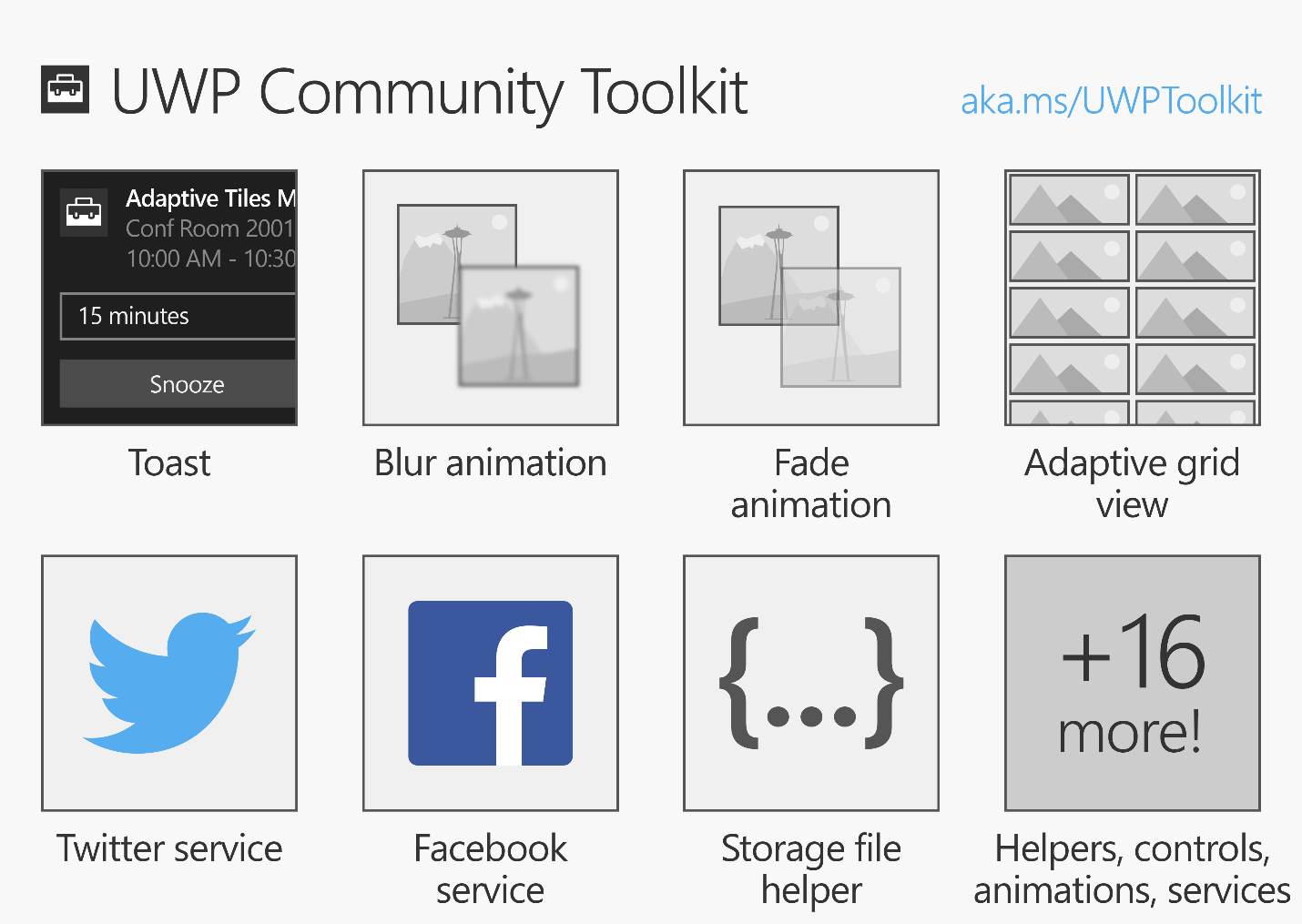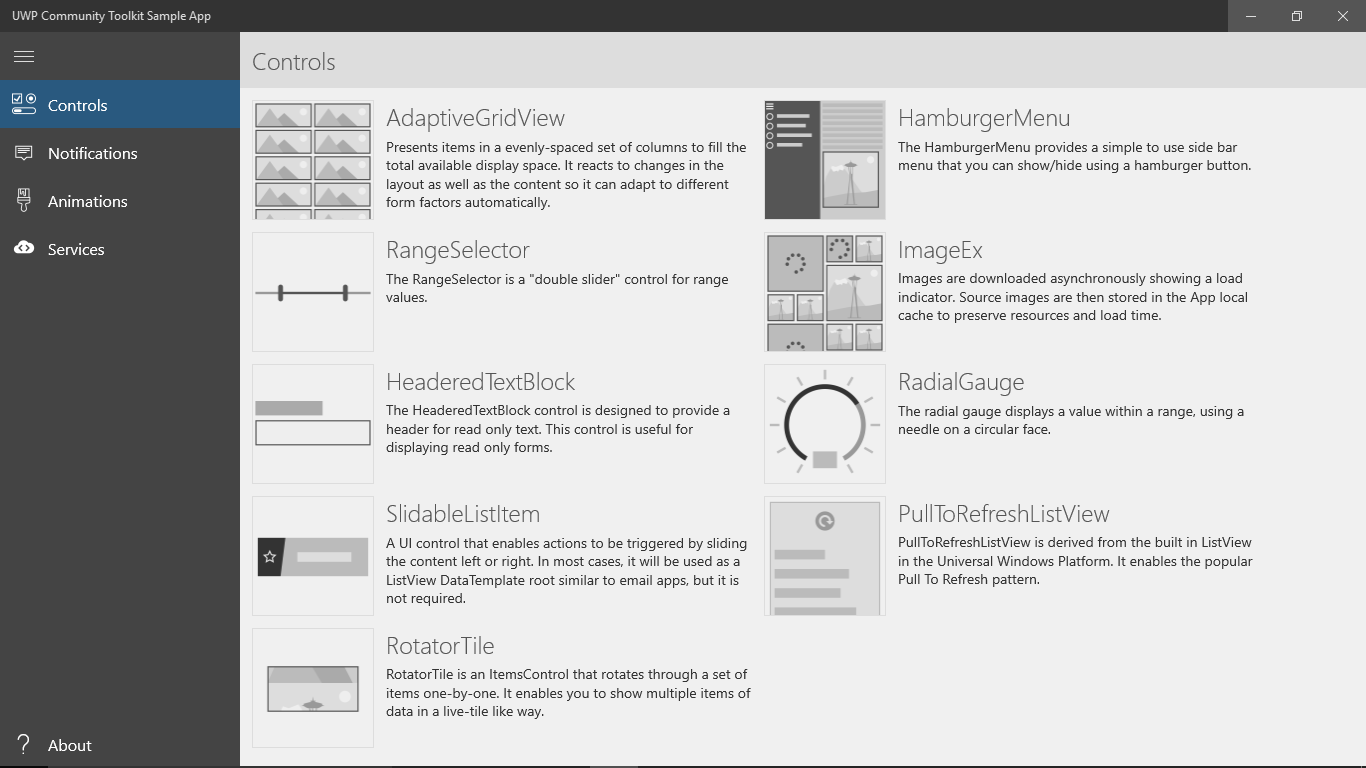Introducing the new UWP Community Toolkit

We recently released a commemorative update for Windows 10 and a new Windows Software Developer Kit (SDK) containing tools, application templates, controls, Windows Runtime API, emulators, and more that help create innovative and attractive applications for the universal Windows platform.
Today we present the open-source UWP Community Toolkit , a new project that allows the developer community to interact and contribute in the form of new features in addition to the SDK.
We created this toolkit with the following goals:
1. Simplify application development : the toolkit includes new features (helper functions / helper, user controls and application services) that simplify or demonstrate most of the developer’s tasks. Here our potential goal is to allow developers to work with just one line of code.
2. Open-Source : a set of tools (source code, tasks and action plan) will be developed as an open-source project. We will welcome the contribution of the .Net community.
3. SDK consistency : community feedback on this project will be taken into account when developing future versions of the Windows SDK for Windows 10.
For example, the toolkit makes it easy to share content from your application with social networks such as Twitter, taking all the care of OAuth authentication:
')
// Initialize service TwitterService.Instance.Initialize("ConsumerKey", "ConsumerSecret", "CallbackUri"); // Login to Twitter await TwitterService.Instance.LoginAsync(); // Post a tweet await TwitterService.Instance.TweetStatusAsync("Hello UWP!"); In addition, the toolkit provides methods that allow developers to animate interface elements with just a single line of code:
await element.Rotate(30f).Fade(0.5).Offset(5f).StartAsync(); Further you can find more information about the possibilities of the first release, how to start development, future plans and how to contribute to the development.
UWP Community Toolkit 1.0
The toolbox can be used with any new or existing application written in C # or VB.NET. We are going to maintain the latest and previous stable releases of the SDK. At the moment, the toolkit is compatible with applications developed starting with Windows 10 SDK build 10586 and higher.
UWP Community Toolkit can be used to create an application for any Windows 10 device, including PC, Mobile, XBOX, IoT, and HoloLens. You can also use this toolkit with an existing desktop application converted to UWP using the Desktop Bridge.
The image in the title of the article shows some of the features that are included in the first release of the toolbox.
We also released the UWP Community Toolkit Sample App in the Windows Store, which makes it easy to familiarize yourself with the capabilities of the toolkit before installing or downloading the SDK. This application will also allow you to easily copy and paste the code you need in order to start using the capabilities of the toolkit in your projects.

How to get started you can read the link Getting Started
It's pretty simple:
1. It is necessary that you have installed Visual Studio 2015 with the latest update at number 3 and the SDK
2. Create a new project or open an existing one.
3. Add the UWP Community Toolkit to your project. Open Nuget Package Manager and search for “Microsoft.Toolkit.UWP”. Install
4. Add a link to the package in XAML
<Page x:Class="MainPage" xmlns:controls="using:Microsoft.Toolkit.Uwp.UI.Controls" ... 5. and in C #:
using Microsoft.Toolkit.Uwp; 6. Examples of snippets can be found in the already mentioned application or in the documentation.
In the future, we plan to release stable releases via Visual Studio NuGet on a regular basis.
The toolkit is completely open-source, including the source code of the toolkit, the source code of the sample application, and even the documentation. Plans for the next version are available here.
- if you need to send a bug or request for changes or add functionality, use this form
- if you want to contribute to the development, please start from here
We are very excited about the contribution that some community members have already made in the first release. These include Morten Nielsen, Scott Lovegrove, Pedro Lamas, Oren Novotny, James Croft, Diederik Krols, Hermit Dave, Thomas Nigro, Laurent Bugnion, Samuel Blanchard and Rudy Hyun. In the future, we expect development to continue with even greater community input.
So please try the UWP Community Toolkit Sample App to learn about the features, then install the package from NuGet and play with it. We hope that the developers will give us a good feedback on usability and opportunities present in the project. There are still enough cases in this open-source project: we can help improve accessibility and localization, as well as ensure that the features work with all applications.
Source: https://habr.com/ru/post/308020/
All Articles